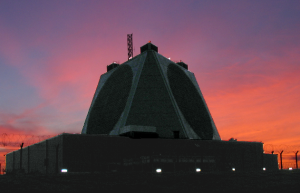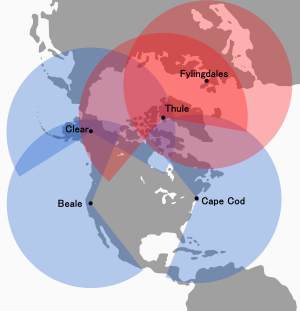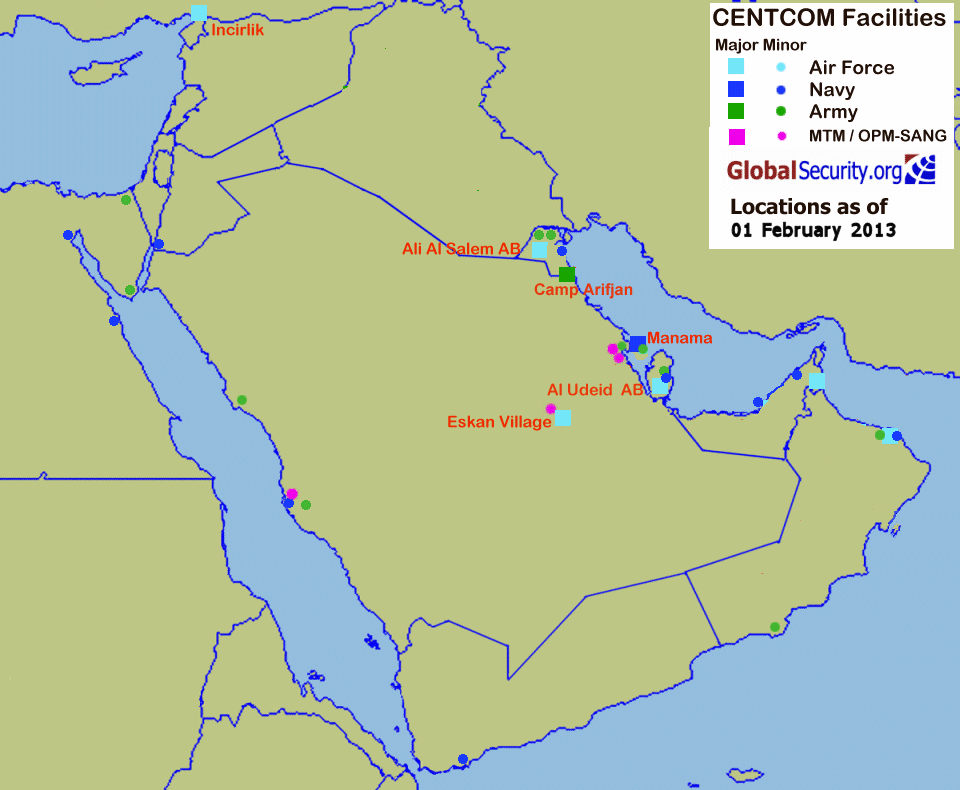Major Shaitan Singh
SENIOR MEMBER

- Joined
- Dec 7, 2010
- Messages
- 3,550
- Reaction score
- 43
- Country
- Location

The FPS-132 UEWR radar at Fylingdales in Britain.
On July 29, the U.S. Defense Security Cooperation Agency notified Congress of a potential sale of an FPS-132 early warning radar to Qatar. This sale of an early warning radar had been announced previously (see my post of November 7, 2012), but the type of radar was not specified at that time.
The cost of the radar and associated equipment, training and support was estimated to be $1.1 billion.
The FPS-132 designation is used for Pave Paws or BMEWS early warning radars that have been upgraded to the Upgraded Early Warning Radar (UEWR) configuration that now forms the core radar infrastructure of the U.S. Ground-based Midcourse Defense (GMD) national missile defense system. The GMD system currently incorporates three FPS-32s, the Pave Paws radar at Beale Air Force Base in California and the BMEWS radars in Fylingdales, Britain and Thule, Greenland. Current plans call for the two remaining Pave Paws radars, at Clear, Alaska and on Cape Cod, to be upgraded to the UEWR configuration by 2017 or later.
The three Pave Paws and two BMEWS radars, all manufactured by Raytheon, are nearly identical except for the somewhat greater size and power the BMEWS radars. Each phased-array face of a Pave Paws radars has a diameter of 22.1 m compared to 25.6 m for a BMEWS radar face. Each face of a Pave Paws is comprised of 1792 active transmit/receive (T/R) modules, giving an average power per face of about 150 kW. Each face of a BMEWS includes 2,560 active T/R modules giving an average power of about 255 kW. Except for the radar at Fylingdales, each of these radars has two faces, each of which covers 120° in azimuth, giving a total azimuthal coverage of 240°. The Fylingdales radar has three faces, providing 360° coverage. For descriptions of the Pave Paws and BMEWS radars, see my post of April 12, 2012.
These radars operate between 420-450 MHz, in the UHF radar band. Because of their limited bandwidth (at most 30 MHZ, probably no more than 10 MHz), the range resolution of these radars is too poor (roughly 25 meters or more) to give them any significant discrimination capability. However, they can simultaneously track large numbers of targets at large ranges. MDAs UEWR fact sheet states that an FPS-132 detects objects out to 3,000 miles. In fact, the actual ranges of these radars are likely to be significantly larger. The original Pave Paws specifications state that it was capable of achieving a S/N = 17.7 dB (= 58.9) against a 10 m2 target (on boresite) at a range of 3,000 nautical miles with a single 16 ms pulse (the longest pulse it can produce).[1] This corresponds to a range of 5,200 km against a 0.1 m2 target with a S/N = 13 dB (=20). The range of the larger BMEWS radars would be about 25% greater. However, because of the curvature of the Earth, ballistic missile targets are unlikely to be observed at ranges much greater than 4,000-4,500 km.
The announcement of the sale of the radar to Qatar gives no details of the radars configuration, such as the number of antenna faces or how it compares in terms of size and power to the existing U.S. Pave Paws or BMEWS radars. However, it seems likely that the radar is similar to the large phased-array early warning radar that Raytheon recently completed building for Taiwan (which in photographs such as the one here looks very much like a Pave Paws or BMEWS radar) and which is usually described as having two faces and costing about $1.3 billion (after significant cost overruns).
Qatar has also recently ordered two TPY-2 X-band radars (as part of two THAAD missile defense systems). In the context of an integrated missile defense system, the FPS-132 UEWR would provide early warning and broad-area surveillance against ballistic missile targets for Qatar (and likely other countries), relieving the TPY-2 radars of this mission so as to enable them to focus on their roles as THAAD fire control and discrimination radars.
In U.S. use, all five of the Pave Paws and BMEWS radars also participate in the U.S. Space Surveillance Network (SSN). While Qatar probably has little use for space surveillance, data from this radar (if made available) might be quite useful to the U.S. SSN, since it has no large radar in this part of the world.
U.S. to Sell Large Early Warning Radar to Qatar (August 7, 2013) | mostlymissiledefense




 but trust me, the Qataris are happy with their way of living.
but trust me, the Qataris are happy with their way of living.

 no biggy
no biggy 









